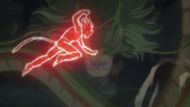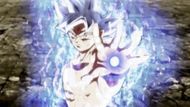When people talk about Dragon Ball, the conversation often drifts toward big punches, energy blasts, and screaming hair transformations. That spectacle is part of the charm, but beneath the flashing beams and shattered landscapes lies a surprisingly layered power system, one that often goes underappreciated.
Unlike some anime that rely heavily on tactical ability match-ups, Dragon Ball has always been more direct. Still, if you peel back the layers, you’ll find four interconnected pillars that make up how power actually works: Ki Manipulation, Magic, Unique Abilities, and Transformations.
Each has its own rules, sub-categories, and interactions that can tilt the scales in battle.
Guide to how power really works in Dragon Ball
1. Ki Manipulation: The foundation of all power

At its core, the Dragon Ball universe runs on ki, the life energy present in every living being. By learning to control and release ki, fighters can perform everything from simple flight to planet-cracking attacks.
1) Understanding Ki
Ki isn’t something you can just use instinctively at high levels. To manipulate it efficiently, you need training from someone who understands its flow. Once mastered, ki can enhance your body, extend your senses, or be unleashed in devastating attacks.
Ki manipulation splits into two tiers: the basic tier and the advanced tier.
2) Basic Tier Ki manipulation
Every competent martial artist in Dragon Ball should be able to:
- Fly by propelling themselves with ki.
- Sense ki to locate allies or detect incoming threats.
- Augment physical stats — speed, strength, durability — by reinforcing the body.
- Launch ki blasts, the bread and butter of combat.
Increasing your ki reserves comes mainly from physical training, which strengthens both your energy capacity and your body’s ability to withstand it. Shortcuts exist, like Guru’s potential unlock, Elder Kai’s ritual, or wish-based boosts from dragons, but they often come with drawbacks, like shortened lifespans or unstable growth. Long-term, nothing beats consistent training.
3) Energy attacks
Once you can control ki, you can shape it into attacks. These fall into five flexible categories:
- Basic Types – The classic energy spheres, from nameless blasts to planet-killers like Frieza’s Death Ball.
- Concentration Types – Energy condensed into a piercing or slicing form, like Piccolo’s Special Beam Cannon or Krillin’s Destructo Disc.
- Accumulation Types – Gathering energy from external sources, such as Goku’s Spirit Bomb, which draws life force from willing beings.
- Alteration Types – Ki shaped into unusual forms, like Gotenks’ Super Ghost Kamikaze Attack or Goku Black’s energy blade.
- Projection Types – Beam-style attacks like the Kamehameha, Final Flash, or Galick Gun.
4) Advanced-tier Ki manipulation
Few reach this level, as it requires special training from masters like the Yardrats or King Kai.
From the Yardrats:
- Instant Transmission – Teleportation to any ki signature you can sense.
- Cloning, gigantification, and healing – Manipulating your spirit to alter physical presence or restore health.
- Forced Spirit Fission – Vegeta’s advanced technique to separate absorbed energy or undo fusions.
From King Kai:
- Kaio-ken – Temporarily multiplies your ki (and thus all stats), at the cost of strain on the body.
- Spirit Bomb – The ultimate accumulation attack, borrowing energy from life across the universe.
Ki mastery is the bedrock of Dragon Ball’s combat system, but it isn’t the only game in town.
2. Magic: The rule-breaker

Magic in Dragon Ball is less clearly defined than ki, but it stands out because it bypasses raw power scaling. While ki builds up raw stats and destructive potential, magic often changes the rules of engagement entirely.
We can sort magic into three broad types: hex magic, supportive magic, and magical items.
1) Hex magic
These are abilities that can instantly neutralize an opponent regardless of their power level:
- Dabura’s stone spit – Turns victims into stone on contact.
- Majin Buu’s candy beam – Transforms targets into edible confections.
- Moro’s energy absorption – Drains life force from planets or fighters, weakening even stronger opponents over time.
Because hex magic sidesteps durability and raw strength, it’s among the deadliest forms of power.
2) Supportive magic
Not as lethal on its own, but invaluable for control and strategy:
- Mind control – Babidi’s manipulation of Vegeta into Majin Vegeta.
- Telekinesis – Moro pulling enemies or objects toward him.
- Memory reading – Extracting vital information from opponents.
Some supportive magic can counter other magical abilities, like the Grand Supreme Kai’s sealing spell used on Moro millions of years ago.
3) Magical items
Magic also resides in objects:
- Power Pole (Nyoi-bō) – Extends to incredible lengths.
- Flying Nimbus – A cloud that carries only the pure-hearted.
- Fortuneteller Baba’s crystal ball – Views distant events across realms.
- Z-Sword – A legendary blade with sealing power (and the key to freeing Elder Kai).
- Potara Earrings – Fuses two beings permanently (or temporarily, in mortal cases).
- Senzu Beans – Instantly heal physical wounds and sustain the body for days.
Magic’s versatility makes it dangerous, but it’s still limited by the user’s creativity and preparation.
3. Unique abilities: Race-specific and miscellaneous

Unique abilities are powers that don’t fit neatly into ki or magic. Some are inherent to a race’s biology, others are individual techniques that can be learned.
1) Race-specific abilities
Saiyans – The most famous race in the series:
- Zenkai Boost – Growing stronger after surviving near-fatal injuries.
- Rapid adaptation – Gaining massive power leaps mid-battle.
Namekians – Known for:
- Regeneration – Healing lost limbs or major injuries, provided the head remains intact.
- Healing – Restoring others’ health and stamina.
- Fusing – Combining with other Namekians to merge power and skills.
- Dragon Ball creation – Crafting the wish-granting orbs that often drive the plot.
Other races, like the sniper-eyed Snipealiens or molten-producing Metalmen, also have one-off racial abilities.
2) Miscellaneous unique abilities
These can be biological quirks, learned skills, or unexplained oddities:
- Captain Ginyu’s Body Change – Swapping bodies with another being.
- Hit’s Time Skip – Jumping ahead in time fractions to land unavoidable hits.
- Guldo’s time freeze – Stopping time while holding his breath.
- Dispo’s speed mode – Moving faster than light.
- Devil Man’s Devil Might Beam – Exploits evil in a person’s heart to destroy them.
These abilities can completely flip battles, especially when opponents are unprepared.
4. Transformations: The multipliers

Transformations are perhaps the most famous part of Dragon Ball’s power system. They typically act as multipliers, amplifying base power by a set amount.
1) Standard transformations
These include most forms you know:
- Great Ape (Ōzaru) – Multiplies power by 10×.
- Super Saiyan – A 50× multiplier over base.
- Super Saiyan 2 & 3 – Further increases in output, with heavier stamina costs.
- Golden Frieza, Orange Piccolo – Form-specific multipliers for non-Saiyan characters.
The main drawback is the strain on stamina and control.
2) Mutations
Some forms break the normal transformation rules:
- Frieza’s suppression forms – Lowering power instead of increasing it.
- Broly and Kale’s Legendary Super Saiyan – Rage-fueled, self-sustaining boosts that grow mid-battle.
- Trunks’ Super Saiyan Rage – A unique hybrid form rivaling Super Saiyan Blue.
- Goku Black’s Super Saiyan Rosé – A god-ki variant of Super Saiyan.
Mutations in Dragon Ball often carry unique traits beyond raw multipliers.
3) God forms and divine transformation
When trained with god-ki, mortals can access divine forms:
- Super Saiyan God – Leaner, faster, vastly stronger, attained via ritual.
- Super Saiyan Blue – Combines god-ki control with Super Saiyan’s multiplier.
- Ultra Instinct – Technically a technique, but with a distinct transformation; it focuses on perfect defensive reactions.
- Ultra Ego – Vegeta’s form emphasizing offense, growing stronger as he takes damage, and wielding Hakai energy.
4) Absorption-based transformations
These occur when a character in Dragon Ball consumes or fuses with others:
- Majin Buu – Gains the abilities of absorbed fighters.
- Cell – Becomes “perfect” by absorbing Androids 17 and 18.
- Moro – After absorbing Android 73, it gains its ability to copy and store powers.
Absorption offers a mix of power increase and skill acquisition, making it one of the most versatile transformation types.
Final thoughts
The Dragon Ball power system might seem chaotic at first glance, but its structure becomes clear once you see how each category interacts:
- Ki manipulation is the universal foundation that everyone uses.
- Magic changes the rules, bypassing brute strength.
- Unique abilities give individuals or races a strategic edge.
- Transformations push power into new realms, sometimes beyond conventional counters.
In battle, raw strength in Dragon Ball often wins, but the series is filled with moments where clever use of magic, unique abilities, or transformation timing turns the tide. That balance between sheer force and strategic advantage is what keeps Dragon Ball’s fights memorable, even when they’re “just” a flurry of punches and energy beams.
